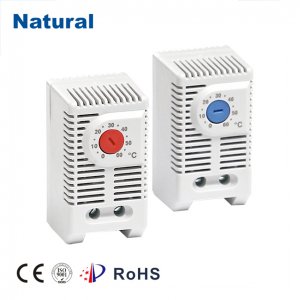Introduction

In the modern world, comfort and efficiency have become paramount in our daily lives. One of the technologies that greatly contributes to achieving both is the thermostat temperature controller. With its ability to regulate indoor temperatures, thermostat temperature controllers have revolutionized the way we live, work, and interact with our environment. This article delves into the advancements and functionality of these remarkable devices. A Brief History
The concept of controlling indoor temperature dates back to ancient civilizations, but it was only in the late 19th century that the first rudimentary thermostats were developed. These early versions relied on mercury and mechanical components to regulate temperature. However, it wasn't until the digital age that the thermostat temperature controller underwent significant advancements.
Advancements in Thermostat Technology
Digital Precision:The transition from mechanical to digital thermostats brought about a new level of precision. Digital displays enabled users to set and read temperatures more accurately, leading to enhanced comfort and energy savings.
Programmable Thermostats:The introduction of programmable thermostats allowed users to schedule temperature changes throughout the day. This innovation optimized energy consumption by adjusting temperatures automatically when occupants were away or sleeping.
Smart Thermostats:With the advent of the Internet of Things (IoT), smart thermostats took center stage. These devices can be controlled remotely via smartphones and can learn user preferences over time. They also incorporate data from external sources such as weather forecasts to optimize temperature settings.
Functionality of Thermostat Temperature Controllers
Thermostat temperature controllers operate on a simple principle: maintaining a desired temperature within an enclosed space. Here's how they work:
Temperature Sensing:Thermostats are equipped with sensors that constantly monitor the temperature in the environment they control. This data is used as the basis for making adjustments.
Comparison and Decision:The sensed temperature is compared to the desired setpoint. If the actual temperature deviates from the setpoint, the thermostat makes a decision on whether to activate heating or cooling systems.
Control Signals:Once the decision is made, the thermostat sends control signals to the heating or cooling systems. These signals prompt the systems to either generate warmth or coolness to bring the temperature back to the desired level.
Feedback Loop:The process continues in a feedback loop, with the thermostat continually monitoring and adjusting until the desired temperature is achieved and maintained.
Benefits of Thermostat Temperature Controllers
Energy Efficiency:By maintaining consistent temperatures and adjusting settings when needed, thermostat controllers contribute to energy savings by preventing unnecessary heating or cooling.
Cost Savings:Energy efficiency translates to cost savings on utility bills. Smart thermostats, in particular, can learn occupancy patterns and adjust settings accordingly, further reducing energy waste.
Comfort:Thermostat temperature controllers ensure that indoor environments remain comfortable year-round, regardless of external weather conditions.
Environmental Impact:Reduced energy consumption not only benefits the wallet but also reduces greenhouse gas emissions, making thermostat controllers environmentally friendly.
Conclusion
Thermostat temperature controllers have come a long way from their humble beginnings, evolving into sophisticated devices that balance comfort, efficiency, and environmental consciousness. Through digital precision, programmable features, and the integration of smart technology, these controllers have revolutionized the way we manage indoor environments. As technology continues to advance, we can expect even more innovative solutions that push the boundaries of comfort and sustainability.
 28 items Patent
28 items Patent
 28 items Patent
28 items Patent
 28 items Patent
28 items Patent








